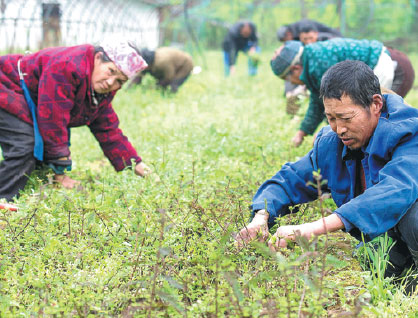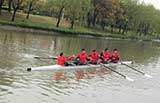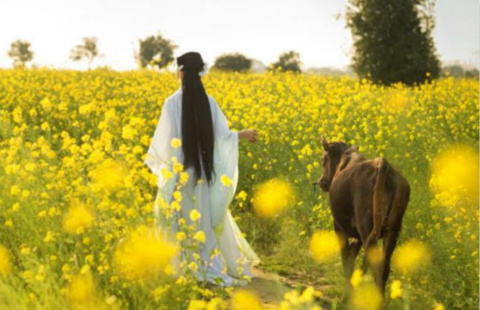Tree-planting project cleans Yangtze's branches
By Luo Wangshu and Tan Yingzi (China Daily) Updated: 2016-04-08 08:05
|
Workers care for saplings that will be planted along major tributaries of the Yangtze River in Chongqing. Liu Chan / Xinhua |
"The diversity of bird species (in the area around Kaixian) rose to about 200 last year, from 130 in 2010," said Huang Yazhou, the administration bureau's deputy head, who attributed the development to the improved environment.
Huang, a passionate birdwatcher, has witnessed the rising numbers and greater diversity of birds in the county.
"The change in the status of birds in the area reflects the improvement in the local ecosystem," he said. For Huang, the improved conditions were signaled by the discovery of three Chinese mergansers, an endangered species of duck, in Kaixian.
"In February 2014, I regularly observed the birds along with another birdwatcher. One day, we saw some new birds, which looked like mergansers. If they had been ordinary mergansers, it would not have been a big deal, but the birds we saw looked slightly different.
"We found a boat, rowed closer to the birds and took some photos that confirmed that they were Chinese mergansers. I was so excited. It was a first for me. When we were sure the birds were indeed Chinese mergansers, we did everything we could to take more photos. We contacted many people, including cruise companies and television stations. The bird-watching community in Chongqing was thrilled," he said.
Huang was excited as he recalled the experience, which underlined the improvements in the local environment, especially the river from which the birds got most of their food.
In the summer of the same year, Huang also saw a spot-billed duck chick in Kaixian. "The spot-billed duck belongs to the Anatidae family of migratory birds, which usually spend the winter in the south of China, including Chongqing, before flying north in summer - to the Changbai Mountains in Jilin province, or to Siberia, for example - to nurture their chicks," he said.

"The chick was about 20 days old, which meant it had definitely been born in the area. It was the first recorded instance of Anatidae migratory birds (which include ducks, swans and geese) breeding in Chongqing. That was good news for us, because the birds will only breed in a clean, natural environment," he said.
Birds of prey, such as Bonelli's eagle, have also been seen in the area. "The presence of raptors indicates that the food chain for predators has improved," Huang said.
Trial and error
The new model came about as a result of trial and error. In 2010, Luo and his team at the Chongqing Forestry Academy introduced foreign plant species, including river birch and water tupelo, which are common in Tennessee and Maryland in the United States, to the county.
The trial was only partially successful, however, as most of the trees survived the first two years of the experiment, but a number died.
Constant experimentation has resulted in the bureau experiencing its fair share of failure. "For our experiments in the past five years, we selected about 20 species at first, including poplars and water birch. But only six species survived," said Xiong from the administration bureau.
Luo said the improvements in the local ecosystem are heartening, but the process is far from complete: "Not all parts of the fluctuation area can be restored by science and technology. Most of the changes are dependent on natural recovery, which will take time."

- Scalpers selling Disney resort tickets for as much as $600
- China has 1 in 5 of all college students in the world: Report
- Diabetes risk rising for both children and adults
- US-Manila drill 'imperils China'
- Ties with Sri Lanka to deepen
- Harsher terms await drug offenders
- New-age robot offers centuries-old wisdom in Beijing temple
- China to soon have Oxbridge-like rowing competitions
- In Shanghai, not visiting elderly parents could harm children's credit ratings
- Zhubi Reef lighthouse comes to life








